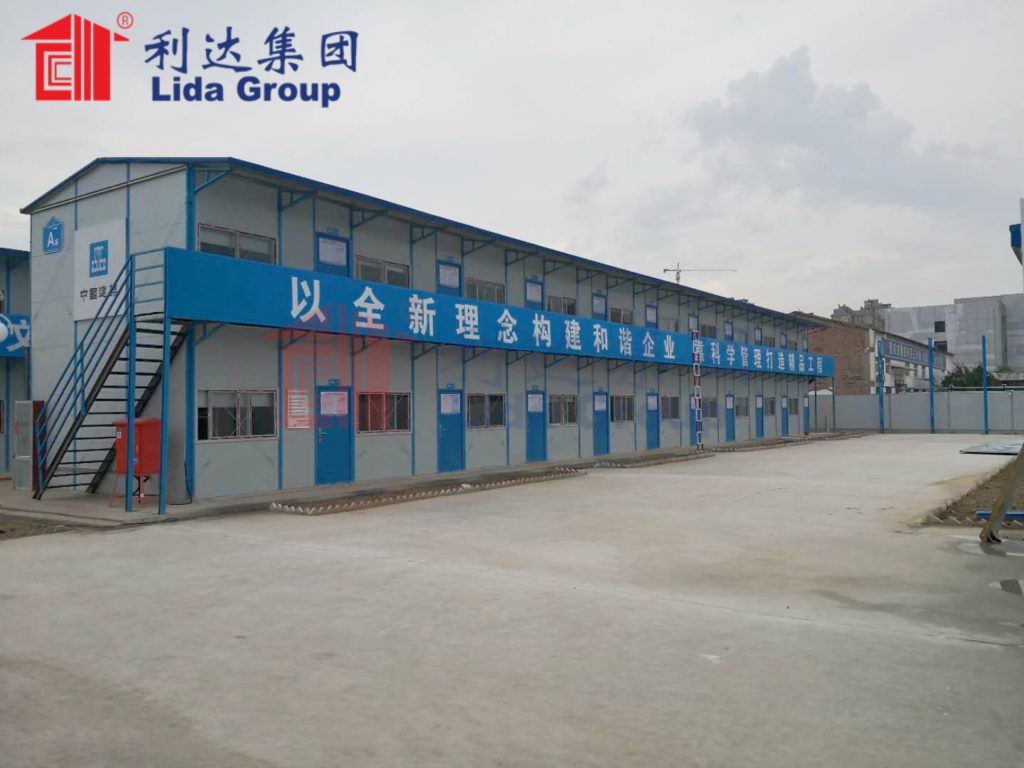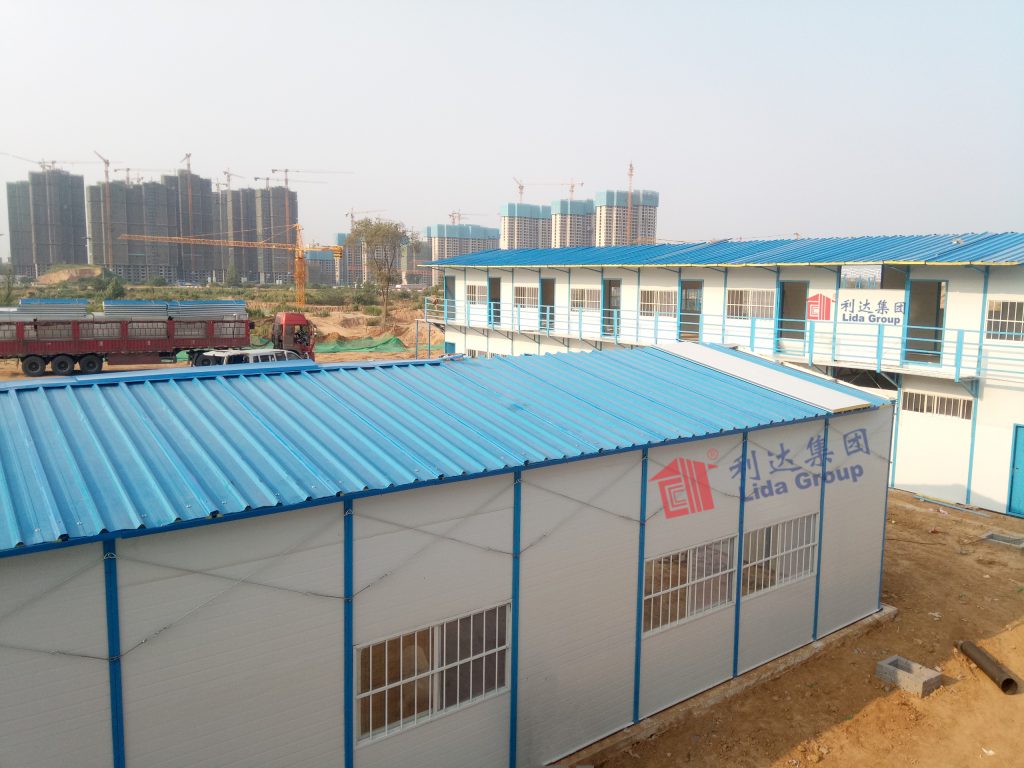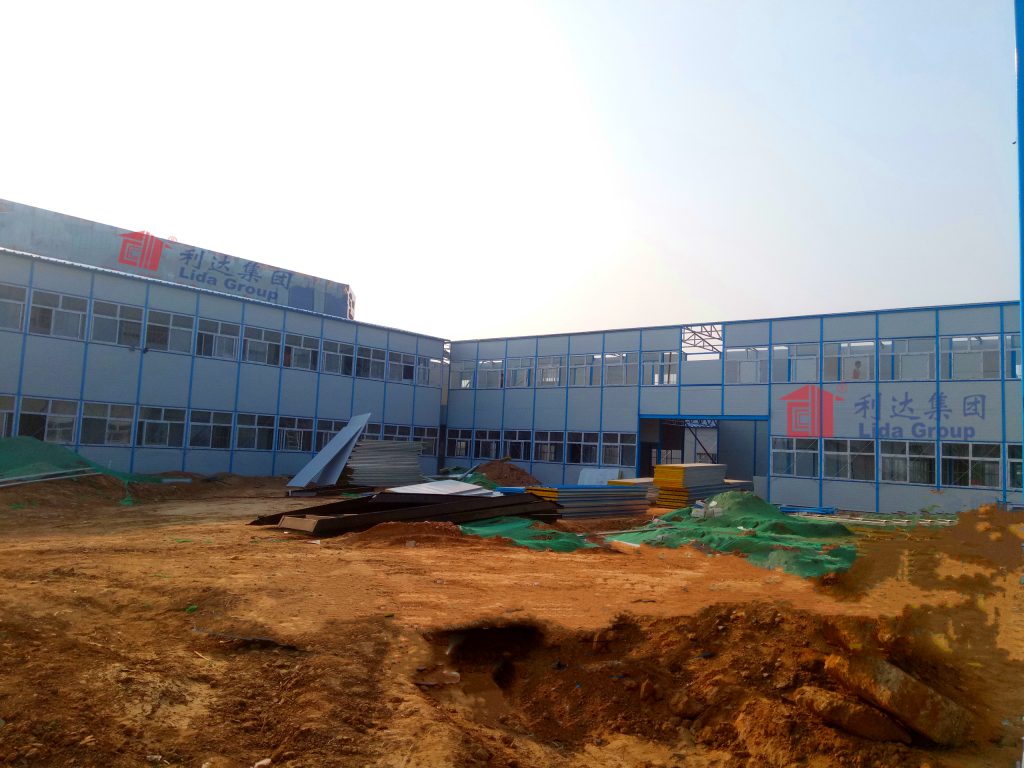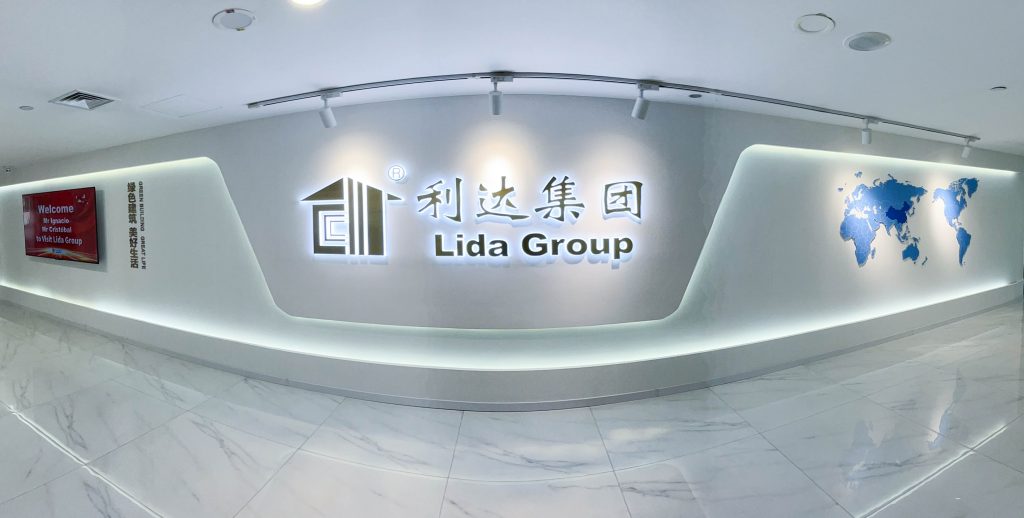Rapid Deployment with Our Temporary Mobile Building Units
2025-Nov-06 17:50:53
By Admin
In an era defined by urgent infrastructure needs, climate-induced disasters, and dynamic business operations, the demand for fast, flexible, and reliable building solutions has never been greater. Traditional construction—with its months-long timelines, fixed designs, and exorbitant costs—can no longer keep pace with crises, project deadlines, or evolving community needs. This is where temporary mobile building units (TMBUs) emerge as a transformative force: prefabricated, modular structures engineered for rapid deployment, reconfiguration, and adaptability across every sector. From emergency medical clinics erected in days after natural disasters to modular classrooms addressing school overcrowding, TMBUs are redefining what “built for speed” means—without sacrificing quality, safety, or sustainability.

1. The Evolution of Temporary Mobile Building Units: From Basic Cabins to Smart Infrastructure
The concept of portable structures is hardly new. For millennia, humans have used movable shelters—from yurts to covered wagons—to adapt to changing environments. But modern TMBUs represent a quantum leap from these rudimentary designs, driven by advances in materials science, manufacturing technology, and digital integration.
1.1 A Brief History of Portable Building Innovation
The first commercial portable building, branded as the “Portakabin,” was developed in 1961 in York, England, by Donald Shepherd. Initially designed as temporary site offices for construction projects, these early units were basic metal boxes with minimal insulation or functionality. Over the next six decades, however, the industry evolved dramatically. The 1990s saw the rise of modular construction, where units were prefabricated in factories and assembled on-site—a shift that reduced deployment time by 50% compared to traditional methods. The 2000s brought stricter building codes and sustainability standards, pushing manufacturers to adopt high-strength steel frames, UV-resistant membranes, and energy-efficient systems. By the 2020s, digital technologies like IoT, BIM (Building Information Modeling), and AI transformed TMBUs from passive shelters into “smart” structures capable of self-monitoring, predictive maintenance, and adaptive climate control.
1.2 Defining Modern TMBUs: Key Characteristics
Today’s temporary mobile building units are defined by four core attributes that distinguish them from both traditional construction and outdated portable cabins:
- Modularity: Units are designed as interchangeable components that can be linked, stacked, or reconfigured to create spaces ranging from 20㎡ offices to 10,000+㎡ warehouses. For example, a 20-foot shipping container can be converted into two room units, cutting transport volume by 50% while doubling usable space.
- Rapid Deployability: Factory prefabrication eliminates on-site delays. Most TMBUs require only a level surface (no extensive foundation work) and can be installed by 2–4 workers in hours or days. ClearSpan India’s Rapid Erect Sun Shelter (RESS), for instance, is fully operational in just 20 minutes with no heavy machinery needed.
- Durability: Modern TMBUs meet rigorous industry standards, with steel frames boasting a yield strength of ≥355 MPa and membranes rated UV-resistant Class 1. They withstand extreme conditions: from -30°C to +60°C temperatures, 150 km/h winds, and 1.5 kPa snow loads.
- Functionality: Units come fully equipped with electrical systems, HVAC, insulation, and customizable interiors. Triumph Modular’s healthcare TMBUs, for example, include temperature-controlled zones (2–8°C for vaccine storage) and telemedicine-ready infrastructure.

2. How TMBUs Work: The Science of Rapid Deployment
The speed of TMBUs stems from a streamlined, parallel workflow that breaks the linear constraints of traditional construction. Here’s a step-by-step breakdown of their deployment process:
2.1 Factory Prefabrication: Quality in Controlled Environments
Nearly 90% of TMBU construction occurs in climate-controlled factories, where components are built to precise specifications. This eliminates weather delays, material waste, and on-site errors. Manufacturers like ASATI produce rapid deployment structures (RDS) in New York facilities, integrating high-quality systems—such as primary and backup inflation units, propane generators, and custom entrances—into shipping containers that double as storage and transport vessels.
Factory production also ensures compliance with global standards: ISO 9001 for quality management, EN 13782 for temporary structures, and CSA A277 for modular building safety. For healthcare applications, units meet GMP requirements and ADA accessibility standards; military TMBUs include EMP-shielded enclosures and IP67 dust/water resistance.
2.2 Transport: Mobility Across Any Terrain
TMBUs are engineered for maximum portability. Most fit into standard shipping containers (20-foot or 40-foot), making them transportable by truck, rail, or ship. For remote or disaster-stricken areas where roads are impassable, lightweight units (gross weight <3,000 kg) can be airlifted by helicopter. Rapid Housing Systems (RHS) even offers a specialized carrier vehicle with all-wheel steering and three-dimensional leveling, enabling TMBUs to be placed on uneven terrain with up to 1,000 mm of slope—no graders or cranes required.
2.3 On-Site Installation: From Delivery to Occupancy
The final step—installation—requires minimal time and labor. The key enabler is simplified anchorage: base models use water ballast for quick setup, rated for 60 mph winds and 25 lb. snow loads. For harsher conditions, manufacturers offer reinforced anchorage systems (e.g., ground screws or concrete footings) that boost wind resistance to 150 km/h or more.
A typical installation timeline looks like this:
- Site Preparation: 1–3 days (vs. 30+ days for concrete foundations in traditional construction).
- Delivery: Units arrive pre-wired and pre-plumbed on flatbed trucks.
- Assembly: 2 workers can install 500㎡ in 8 hours; 20 units can be fully operational in 2–3 hours.
- Occupancy: No additional finishing work needed—units are move-in ready with lighting, HVAC, and fixtures.

3. Core Benefits: Why TMBUs Outperform Permanent and Traditional Temporary Structures
TMBUs offer a unique combination of speed, cost savings, flexibility, and sustainability that makes them superior to both permanent buildings and outdated temporary solutions (e.g., basic tents or FEMA trailers). Below are their five most impactful advantages:
3.1 70% Faster Deployment: Meeting Urgency Head-On
The greatest strength of TMBUs is their ability to deliver functional space in days, not months. This speed is critical in crises: after Hurricane Maria in 2017, 500 emergency clinics were built in Puerto Rico using modular units within just two weeks—a feat impossible with traditional construction. For non-emergency needs, the timeline is equally impressive: a school district needing temporary classrooms can have them installed before the start of the semester, while a construction company can set up a site office within 24 hours of breaking ground.
This speed stems from parallel processing: while factory teams build the units, site crews handle minimal preparation. Traditional construction, by contrast, follows a linear sequence (design → permit → excavate → build → finish) that takes 3–12 months for small-to-medium structures.
3.2 40–60% Cost Savings: Efficiency Across the Board
TMBUs reduce costs at every stage of the building lifecycle:
- Manufacturing: Factory production cuts material waste by 30% compared to on-site construction, as excess materials are reused across projects.
- Installation: Minimal labor and no heavy machinery requirements lower on-site costs. A 500㎡ TMBU installation costs \(15–\)25 per square foot, vs. \(30–\)50 for traditional construction.
- Operations: Energy-efficient systems (e.g., AI-controlled HVAC) reduce utility bills by 30%, while IoT sensors prevent costly equipment failures via predictive maintenance.
- Resale Value: TMBUs depreciate at just 3–5% annually (vs. 10–15% for permanent buildings) and retain 80% of their value after 10 years, creating a 15–20% ROI through resale or lease.
3.3 Infinite Reconfiguration: Adapting to Changing Needs
Modularity is the backbone of TMBU flexibility. Units can be added, removed, or repurposed as needs evolve:
- A construction site office can be converted into a storage unit once the project ends.
- A 50-bed emergency hospital can be scaled to 200 beds by linking additional units.
- A pop-up retail space can be reconfigured with new layouts for seasonal promotions, thanks to 8m clear spans that eliminate interior columns.
This adaptability is particularly valuable for industries with fluctuating space demands, such as retail (peak seasons), education (enrollment spikes), and healthcare (pandemic surges). Triumph Modular reports that 90% of TMBU materials can be reused across 5+ projects, further enhancing cost efficiency.
3.4 Reduced Carbon Footprint: Sustainability by Design
TMBUs are inherently greener than permanent structures, addressing the construction industry’s 39% global carbon footprint. Key sustainability features include:
- Recyclability: 95% of steel frames are recyclable, while PVC membranes can be repurposed or recycled at end-of-life.
- Lower Emissions: Life cycle emissions are 60% lower than concrete buildings, according to a BREEAM report.
- Energy Efficiency: LEED v4-compliant units use LED lighting, high-efficiency insulation, and solar-ready roofs to cut energy use by 30%.
- Minimal Site Impact: No excavations or concrete foundations reduce soil disruption and preserve natural habitats—a critical advantage for remote or ecologically sensitive areas.
3.5 Code Compliance: Safety Without Compromise
A common misconception is that TMBUs are “substandard” compared to permanent buildings. In reality, modern units meet or exceed the same codes:
- Structural Safety: CSA A277 certification ensures TMBUs adhere to the same building standards as site-built structures, withstanding seismic activity (Zone 4 compliance) and extreme weather.
- Healthcare Compliance: Units meet strict healthcare codes, including temperature control for vaccine storage (2–8°C) and acoustic insulation (<45 db) for patient privacy.
- Accessibility: ADA-compliant ramps, wide doorways, and accessible bathrooms make TMBUs suitable for schools, clinics, and public spaces.

4. Industry Applications: TMBUs in Action Across Sectors
The versatility of TMBUs makes them indispensable across 10+ industries, each leveraging their unique capabilities to solve specific challenges. Below are real-world use cases and success stories:
4.1 Emergency Response: Saving Lives in Crises
When disasters strike—wildfires, floods, earthquakes—communities need immediate access to shelter, medical care, and command centers. TMBUs deliver on all fronts:
- Field Hospitals: CIP Modular’s CSA A277-certified units include 50-bed wards, operating rooms, and pharmacy zones, deployed in under two weeks after wildfires in California. These units are equipped with HVAC systems that maintain sterile environments and telemedicine infrastructure for remote consultations.
- Disaster Shelters: RHS TMBUs are designed for earthquake zones, withstanding -30°C temperatures and transporting via helicopter to areas with destroyed roads. After the 2023 Turkey-Syria earthquakes, 200 RHS units were deployed as shelters and command posts, housing 1,000+ survivors.
- Relief Hubs: ASATI’s RDS units serve as mobile warehouses, storing food, water, and medical supplies. Their 40’ x 250’ domes provide 10,000 sq. ft. of storage, with garage doors for easy equipment access.
4.2 Construction & Infrastructure: On-Site Efficiency
Construction companies rely on TMBUs for on-site offices, worker accommodation, and storage—reducing downtime and improving productivity:
- Modular Offices: Triumph Modular’s pre-wired offices include 3-phase power, Wi-Fi access points, and meeting rooms, enabling project managers to coordinate teams from the site. A 2024 study found that construction firms using TMBU offices reduced project timelines by 15% due to improved on-site coordination.
- Worker Housing: RHS dormitories offer 200% better thermal insulation than standard shipping containers, housing 4–6 workers per unit with shared kitchens and bathrooms. For a remote mining project in Australia, 50 RHS units were deployed in 3 hours, housing 250 workers without delaying drilling operations.
- Equipment Storage: ClearSpan’s RESS units provide 12m vertical clearance for heavy machinery, with fire-retardant membranes and dust-proof enclosures. A construction firm in Dubai used 10 RESS units to store cranes during a sandstorm season, preventing $500,000 in equipment damage.
4.3 Education: Alleviating Overcrowding
Schools and universities face growing enrollment and aging infrastructure—challenges TMBUs solve with fast, flexible classrooms and dormitories:
- Temporary Classrooms: Triumph Modular’s educational units include soundproofing (85 db), whiteboards, and pre-installed electrical conduits for lab equipment. A school district in Texas deployed 30 classroom units in 5 days after a flood damaged its main building, ensuring 600 students returned to class on time.
- STEM Labs: Kenten-Tent’s modular labs are equipped with fume hoods, gas lines, and power outlets for scientific equipment, meeting state education standards. The University of Florida used 5 STEM lab units during a campus renovation, allowing research to continue without interruption.
- Dormitories: Modular dormitories from Triumph Modular house 2–4 students per room, with shared lounges and kitchens. During a student housing shortage at Arizona State University, 100 dorm units were installed in 2 weeks, housing 300 students at 40% less cost than permanent construction.
4.4 Healthcare: Accessible Care Where It’s Needed
Healthcare providers use TMBUs to expand capacity, reach underserved areas, and respond to public health crises:
- Vaccination Centers: Kenten-Tent’s temperature-controlled units maintain 2–8°C storage for vaccines, with drive-through windows and waiting areas. During the 2023 flu season, 50 such units were deployed across rural Kansas, administering 100,000+ vaccines in 6 weeks.
- Mobile Clinics: CIP Modular’s units include exam rooms, X-ray facilities, and telemedicine stations, traveling to remote Native American reservations in Montana. These clinics reduced travel time for patients by 3 hours and increased preventive care visits by 40%.
- Swing Space: When a hospital in Chicago underwent renovation, Triumph Modular provided 10 administrative and patient care units, ensuring no disruption to services. The units were removed once construction ended, with 90% of materials reused for a new clinic in Indiana.

4.5 Military & Defense: Mission-Ready Infrastructure
Military operations require fast, secure, and mobile facilities—needs TMBUs fulfill with specialized designs:
- Command Centers: EMP-shielded units from Kenten-Tent protect communication systems from cyberattacks and electromagnetic pulses, used by NATO forces in Eastern Europe. These units include secure data rooms and satellite internet, enabling real-time coordination.
- Equipment Shelters: IP67-rated units from ASATI store weapons, vehicles, and electronics, resisting dust and water in desert or maritime environments. The U.S. Army deployed 150 such units in Afghanistan, reducing equipment maintenance costs by 25%.
- Barracks: RHS housing units are lightweight (≤3,000 kg) and transportable by helicopter, used by special forces in remote missions. Each unit houses 4 soldiers with beds, storage, and climate control, improving morale and operational readiness.
4.6 Retail & Events: Flexible Spaces for Engagement
Retailers and event planners use TMBUs to create pop-up stores, pavilions, and temporary venues that adapt to trends and crowds:
- Pop-Up Stores: ClearSpan’s 8m clear-span units allow retailers to showcase products without interior columns, used by brands like Nike for limited-edition launches. A pop-up in New York City generated $200,000 in sales over 4 weeks, with the unit reconfigured for a Miami event shortly after.
- Event Pavilions: Kenten-Tent’s acoustic units (<45 db) host concerts and conferences, with customizable lighting and seating. The 2024 Dubai Expo used 50 such pavilions, accommodating 10,000+ attendees daily.
- Seasonal Markets: Modular food courts and vendor stalls are deployed during holiday seasons, with easy removal afterward. A Christmas market in London used 30 TMBUs, increasing vendor revenue by 35% compared to traditional tents.
4.7 Industrial & Manufacturing: Storage and Production Space
Industrial firms rely on TMBUs for high-bay storage, control rooms, and temporary production lines:
- Hazmat Storage: ATEX-certified explosion-proof units from Kenten-Tent store chemicals and fuels, used by oil refineries in Texas. These units include ventilation systems that reduce gas buildup, preventing accidents.
- Control Rooms: Seismic Zone 4-compliant units house monitoring equipment for power plants, with 24/7 climate control to protect sensitive electronics. A nuclear plant in Japan used 10 control room units during a maintenance shutdown, ensuring operations continued uninterrupted.
- Temporary Production Lines: During the COVID-19 pandemic, a pharmaceutical company used 20 TMBUs as packaging facilities, scaling production by 50% to meet demand for PPE.
4.8 Agriculture: Protecting Crops and Livestock
Farmers and agribusinesses use TMBUs for crop storage, livestock shelters, and processing facilities:
- Crop Storage: Ventilated units maintain 60–70% humidity, preserving grains and fruits for 6+ months. A wheat farm in Canada used 15 TMBUs, reducing spoilage by 20% compared to traditional barns.
- Livestock Shelters: Fire-retardant (Class B) units protect cattle and sheep from extreme weather, used by ranchers in Australia. These units include drainage systems that reduce disease spread, improving livestock health.
- Processing Facilities: Mobile packing sheds allow farmers to process crops on-site, reducing transportation costs. A tomato farm in California used 5 TMBUs, cutting post-harvest losses by 15%.
4.9 Sports & Recreation: Year-Round Facilities
TMBUs create indoor and outdoor sports spaces that withstand weather and adapt to different activities:
- Indoor Courts: ASATI’s air-supported domes host pickleball, badminton, and volleyball, with adjustable sizes (40’ w x 250’ l x 20’ h) to fit multiple courts. A community center in Florida used 2 domes, increasing membership by 40% with year-round access.
- Gymnasiums: Insulated units with rubber flooring and mirrors serve as temporary gyms during school renovations. A high school in Illinois used 1 gym unit, allowing sports teams to practice without interruptions.
- Event Venues: ClearSpan’s RESS units host outdoor concerts and sports tournaments, with seating for 1,000+ attendees. A soccer tournament in India used 3 RESS units, protecting players and fans from monsoon rains.
4.10 Mining & Energy: Remote Site Support
Mining and energy companies operate in remote areas with no existing infrastructure—making TMBUs essential for worker housing and operations:
- Drill Camps: RHS modular units adapt to desert and arctic environments, housing workers and equipment. A mining project in Siberia deployed 100 units, withstanding -40°C temperatures and reducing worker turnover by 25%.
- Oil Rig Accommodation: Offshore TMBUs are corrosion-resistant and storm-proof, housing workers on oil rigs in the Gulf of Mexico. These units include soundproofing to reduce noise from machinery, improving sleep quality.
- Renewable Energy Hubs: Solar and wind farms use TMBUs as control rooms and maintenance facilities, deployed near turbines to reduce travel time. A wind farm in Texas used 8 units, increasing maintenance efficiency by 30%.

5. Technological Innovations Shaping the Future of TMBUs (2025 and Beyond)
The TMBU industry is poised for explosive growth, driven by five game-changing technologies that will enhance speed, functionality, and sustainability:
5.1 IoT Integration: Smart, Self-Monitoring Structures
IoT sensors are transforming TMBUs into “connected” buildings that optimize performance and reduce costs:
- Real-Time Monitoring: Sensors track air quality, energy usage, and equipment status, sending alerts to managers via mobile apps. For example, an IoT-enabled HVAC system in a healthcare TMBU will notify maintenance teams if temperatures deviate from 2–8°C, preventing vaccine spoilage.
- Predictive Maintenance: AI algorithms analyze sensor data to predict equipment failures—e.g., an AC unit needing service in 2 weeks—reducing downtime by 40%.
- Energy Optimization: Occupancy sensors automatically adjust lighting and HVAC, cutting energy use by 30%. A construction site office in Saudi Arabia using IoT saved $5,000 in annual utility bills.
5.2 BIM and Digital Twins: Virtual Planning for Perfect Execution
Building Information Modeling (BIM) and digital twins allow manufacturers and clients to visualize, test, and optimize TMBUs before deployment:
- Virtual Configuration: Clients can use BIM software to design layouts, test equipment fits, and map cable routing—eliminating costly on-site modifications. A hospital in Canada used a digital twin to configure a 50-bed TMBU, reducing installation time by 10%.
- Lifecycle Tracking: Digital twins monitor a TMBU’s performance across projects, tracking maintenance history, material wear, and reuse potential. This data helps manufacturers improve designs and clients maximize ROI.
5.3 AI-Powered Climate Control: Adapting to Environments
AI systems are revolutionizing how TMBUs regulate temperature, humidity, and air quality—critical for extreme climates:
- Predictive Cooling/Heating: AI analyzes weather forecasts and usage patterns to pre-cool or pre-heat units. In Saudi Arabia’s desert climate, AI systems pre-cool construction site offices before morning shifts, reducing energy use by 25%.
- Weather Response: Sensors detect sandstorms or heavy rains, automatically closing ventilation systems and reinforcing doors. This feature protected 50 TMBUs in Dubai during a 2024 sandstorm, preventing $100,000 in damage.
5.4 3D Printing: Custom Components at Speed
3D printing is enabling on-demand production of custom TMBU parts, reducing lead times and costs:
- Custom Interiors: 3D-printed shelving, countertops, and fixtures fit unique unit sizes, eliminating waste from standard components. A retail pop-up in Paris used 3D-printed displays, reducing setup time by 15%.
- Rapid Repairs: On-site 3D printers produce replacement parts (e.g., HVAC brackets, door handles) in hours, reducing downtime. A mining camp in Australia used 3D printing to repair a broken generator part, avoiding a 3-day shutdown.
5.5 Solar and Off-Grid Power: Energy Independence
TMBUs are increasingly integrating solar panels, battery storage, and fuel cells to operate off-grid—critical for remote areas:
- Solar-Ready Designs: Many TMBUs come with pre-installed solar mounting systems, allowing clients to add panels quickly. A disaster shelter in Kenya used solar-powered TMBUs, providing electricity for lighting and medical equipment without grid access.
- Hybrid Power: Propane generators (e.g., ASATI’s 20kw units) work with solar panels to ensure continuous power. A construction site in Alaska used this hybrid system, reducing fuel costs by 40%.

6. Choosing the Right TMBU: Key Considerations for Clients
With dozens of manufacturers and configurations available, selecting the right TMBU requires careful planning. Below are critical factors to evaluate:
6.1 Define Your Needs: Purpose, Timeline, and Budget
Start by clarifying:
- Primary Use: Is the unit for emergency shelter, office space, or healthcare? Healthcare units need sterile environments; storage units need high clearance.
- Deployment Timeline: Do you need the unit in 24 hours (e.g., disaster response) or 2 weeks (e.g., school classrooms)?
- Budget: Leasing vs. buying? Short-term leases (6–12 months) are cost-effective for temporary needs; buying makes sense for long-term reuse.
6.2 Evaluate Environmental Conditions
Consider the site’s climate and terrain:
- Weather: High winds (≥100 km/h) require reinforced anchorage; extreme cold needs extra insulation.
- Terrain: Remote areas may need helicopter-transportable units (gross weight <3,000 kg); uneven ground requires leveling systems (e.g., RHS’s 3D leveling carrier).
- Access: Can trucks reach the site? If not, lightweight or collapsible units (e.g., ClearSpan’s RESS) are better.
6.3 Verify Certifications and Compliance
Ensure the unit meets industry standards:
- Structural: CSA A277, ISO 9001, or EN 13782 for safety.
- Industry-Specific: ATEX for hazmat storage, ADA for public spaces, GMP for healthcare.
- Local Codes: Check with municipal authorities for zoning and building permit requirements—reputable manufacturers (e.g., Triumph Modular) handle permitting assistance.
6.4 Assess Manufacturer Capabilities
Choose a manufacturer with:
- In-House Services: Design, production, delivery, and installation—avoiding third-party delays.
- Track Record: Case studies in your industry (e.g., emergency response, education).
- After-Sales Support: Maintenance, repairs, and resale assistance to maximize ROI.

7. Conclusion: TMBUs as the Future of Adaptive Infrastructure
Temporary mobile building units are no longer “temporary” in quality or capability—they are a permanent solution to the world’s most pressing infrastructure challenges. By combining rapid deployment (70% faster than traditional construction), cost savings (40–60% lower), flexibility (infinite reconfiguration), and sustainability (60% lower emissions), TMBUs are reshaping industries from emergency response to retail, education to energy.
The future of TMBUs is even more promising. With IoT, AI, BIM, and 3D printing driving innovation, these structures will become smarter, more efficient, and more accessible than ever. Imagine a world where a field hospital is deployed in hours after an earthquake, a school expands classrooms in days to meet enrollment spikes, and a remote mining camp operates entirely off-grid with solar-powered TMBUs—this is the reality TMBUs are building.
For businesses, governments, and communities, the choice is clear: to meet the demands of a fast-changing world, you need infrastructure that can keep up. Temporary mobile building units aren’t just a solution—they’re the future of adaptive, resilient, and responsible construction.

Related news
-
Lida Group Delivers Cost-Effective Prefab Construction Globally
2025-11-04 17:42:26
-
Sustainable Prefab House Solutions from Lida Group
2025-11-05 17:56:48
-
Explore Our Versatile Temporary Mobile Building Solutions
2025-11-04 16:24:26
contact us
- Tel: +86-532-88966982
- Whatsapp: +86-13793209022
- E-mail: sales@lidajituan.com


